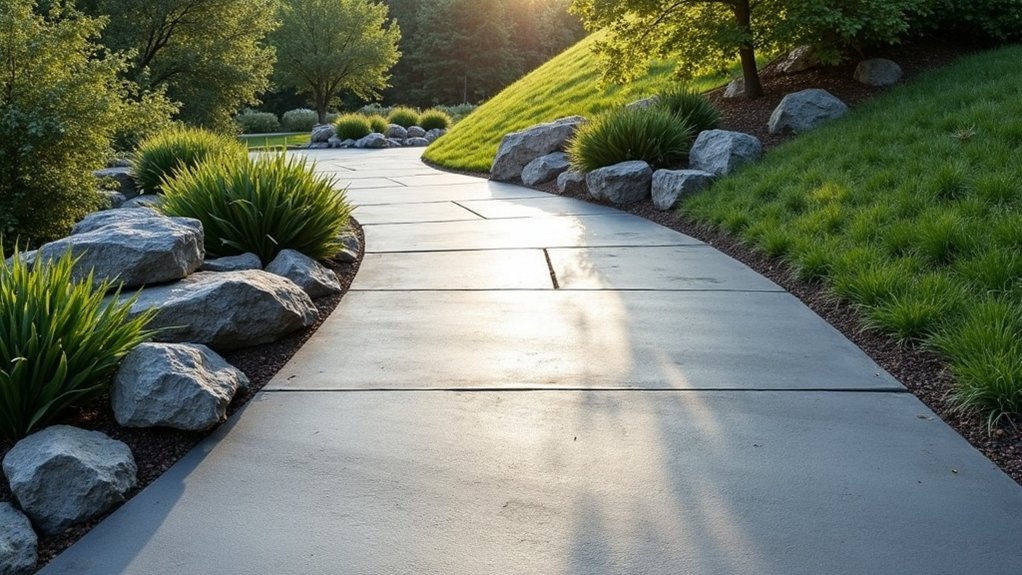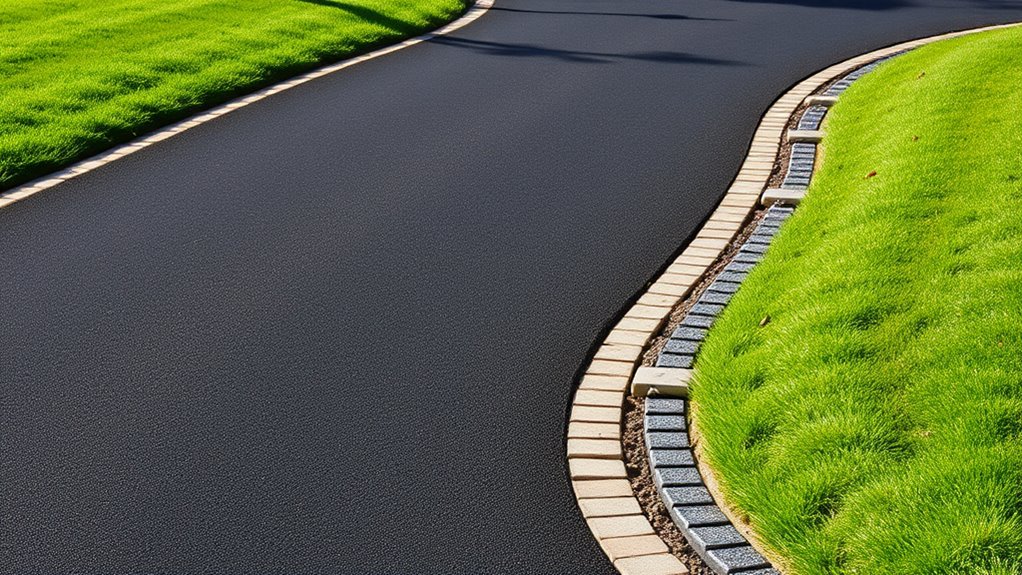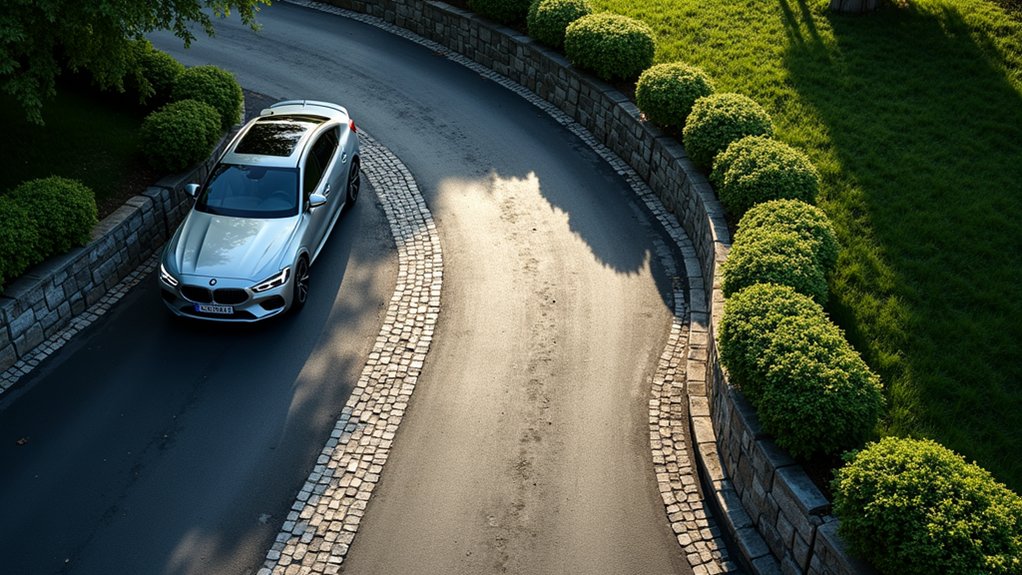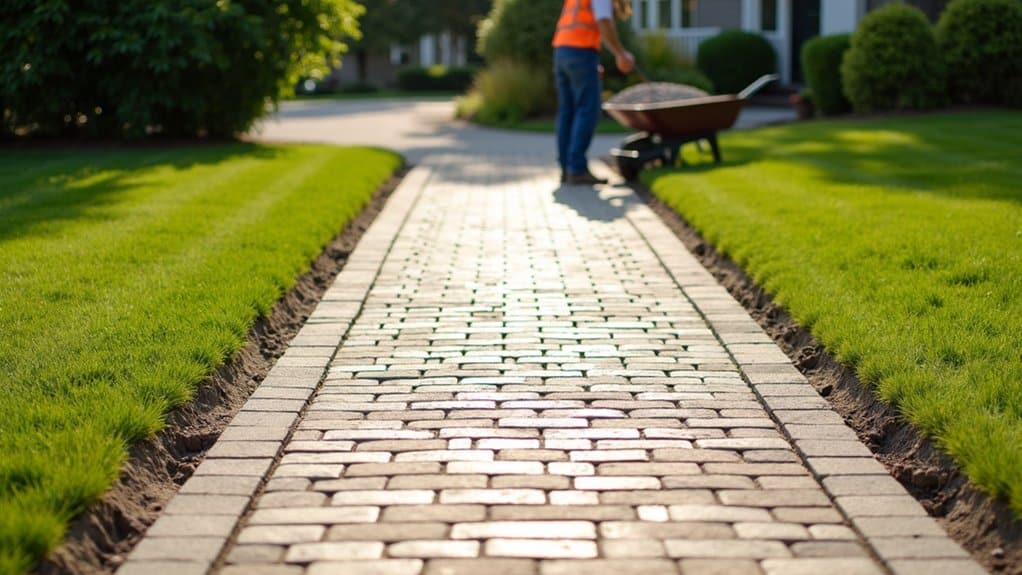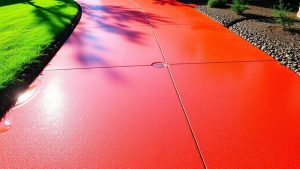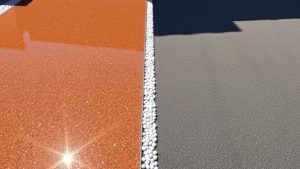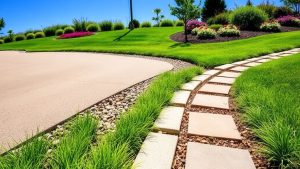When building concrete driveways on sloped areas, begin with obtaining the necessary permits and planning to ensure you comply with local regulations. Level the soil and compact it to reduce shifting. Opt for a strong concrete mix that meets drainage requirements, ensuring a slope of at least 1/4 inch per foot. Consider adding surface treatments for slip resistance and carry out regular maintenance to boost durability. Each step is crucial for the overall success of your project.
Table of Contents
ToggleKey Takeaways
- Maintain a minimum slope of 1/4 inch per foot to ensure effective water drainage away from the driveway and nearby structures.
- Use a solid base of washed, angular gravel to prevent shifting and provide stability on sloped surfaces.
- Incorporate drainage solutions like trench drains to effectively capture and redirect runoff on inclined driveways.
- Apply slip-resistant surface treatments, such as textured coatings, to enhance safety on sloped concrete driveways.
- Regularly check for cracks or erosion to ensure durability and performance in sloped areas.
Permitting and Initial Planning
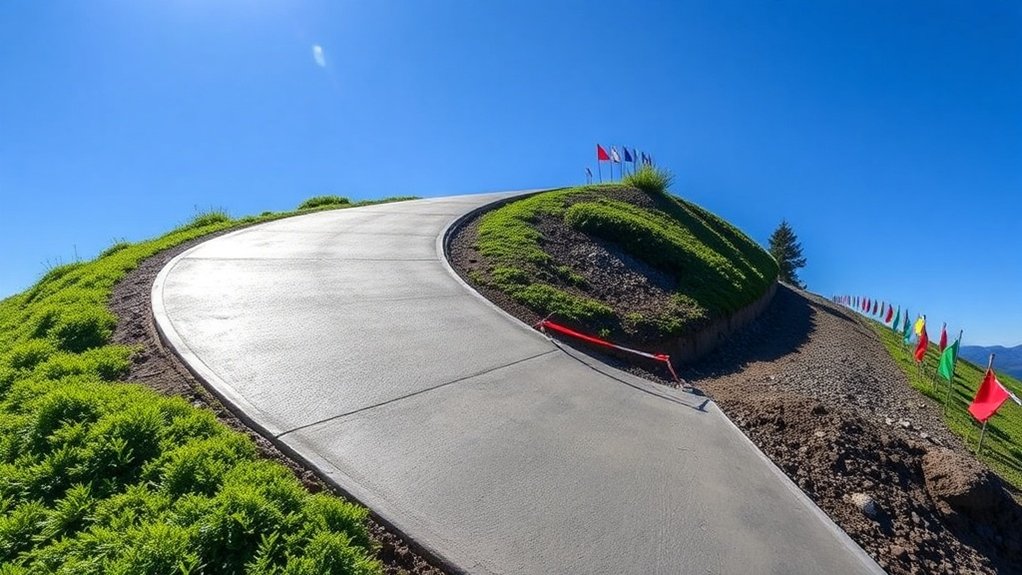
When planning a concrete driveway on a slope, it’s important to handle the permitting process efficiently to comply with local regulations.
Start by checking the permit requirements, which usually involve a formal application and fees. Prepare detailed site plans showing property boundaries, the proposed driveway location, and any existing structures.
Ensure your design meets local zoning laws, especially concerning setbacks and land use. A driveway permit is typically required for new driveway connections, especially those accessing public roads, so be sure to confirm this in your planning.
During the review, authorities will evaluate engineering standards, including material quality and slope specifications, so be ready to modify your plans if necessary.
Don’t forget to consider environmental factors like tree preservation and drainage management, as these can impact your permit approval.
Preparing the Base and Soil Stabilization
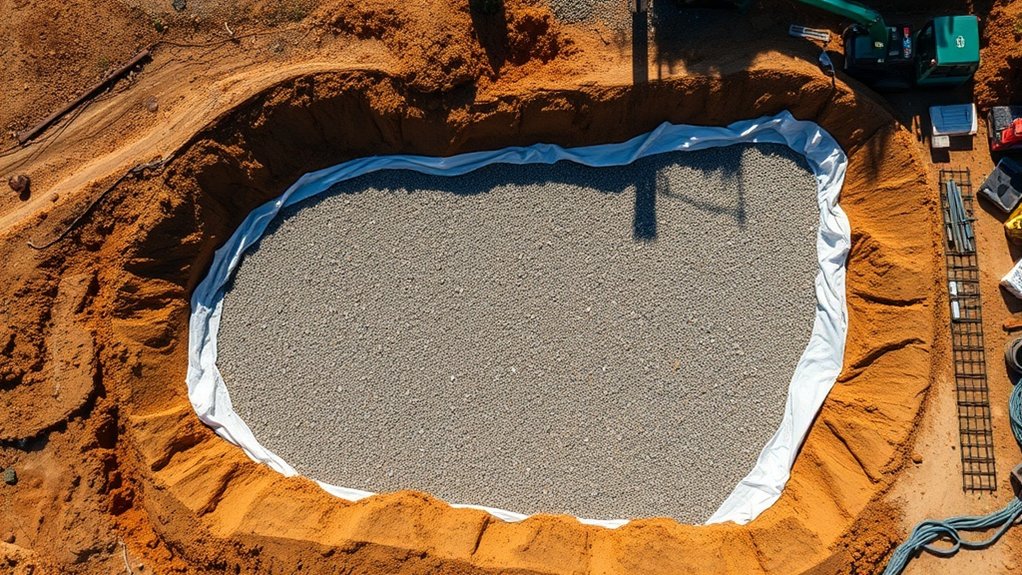
To ensure a strong concrete driveway on a slope, it’s crucial to prepare the base and stabilise the soil properly.
Start by assessing your soil type; for instance, sandy soil may benefit from adding clay, while loamy soil might require gravel for better levelling. Clear away any vegetation and debris before digging out the area to a depth of 6-10 inches, maintaining a consistent slope for drainage.
Use a mechanical plate compactor to ensure the subgrade is stable, checking the density where possible. A solid foundation is essential to prevent future driveway issues.
Once that’s done, spread washed, angular gravel to a depth of 4-6 inches and compact it thoroughly. This creates a solid foundation that minimises water infiltration and prevents future shifting, ensuring your driveway remains stable for years to come.
Concrete Mix and Pouring Techniques
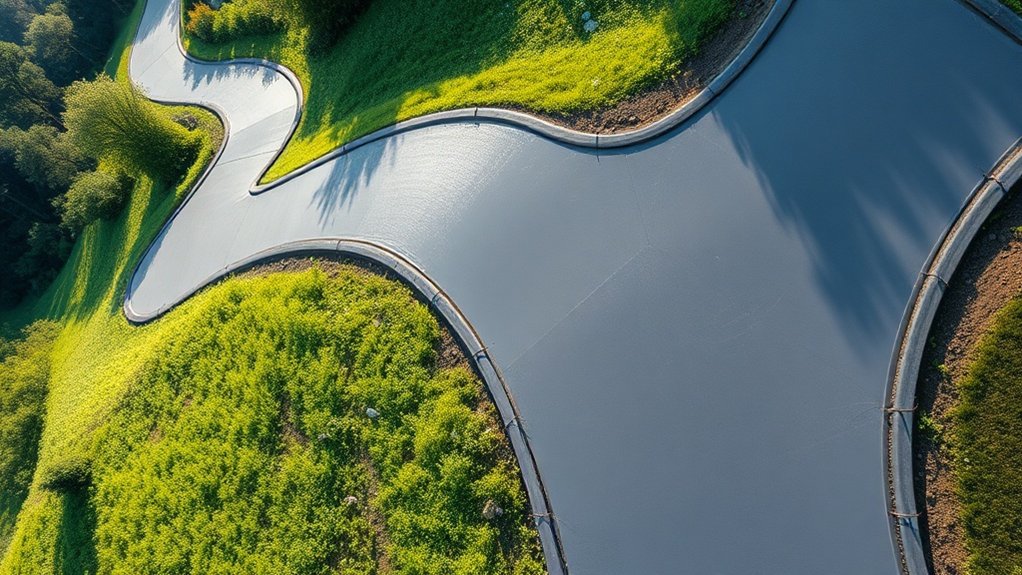
Once you have a solid foundation through proper base preparation and soil stabilisation, the next step is to focus on the concrete mix and pouring techniques that ensure durability and stability for driveways on sloped areas.
To achieve the best results, consider the following:
- Mix Ratios: Use a standard ratio of 1 part cement, 2 parts sand, and 3 parts aggregate, aiming for a compressive strength of at least 27.5 MPa (4000 psi). This is crucial as durability is one of the primary advantages of concrete driveways.
- Concrete Additives: Add air-entraining agents to improve freeze-thaw resistance while keeping the mix workable.
- Pouring Procedure: Maintain a low slump of 75-100 mm to prevent movement down the slope during placement, and finish promptly to avoid surface imperfections.
Drainage and Slope Specifications
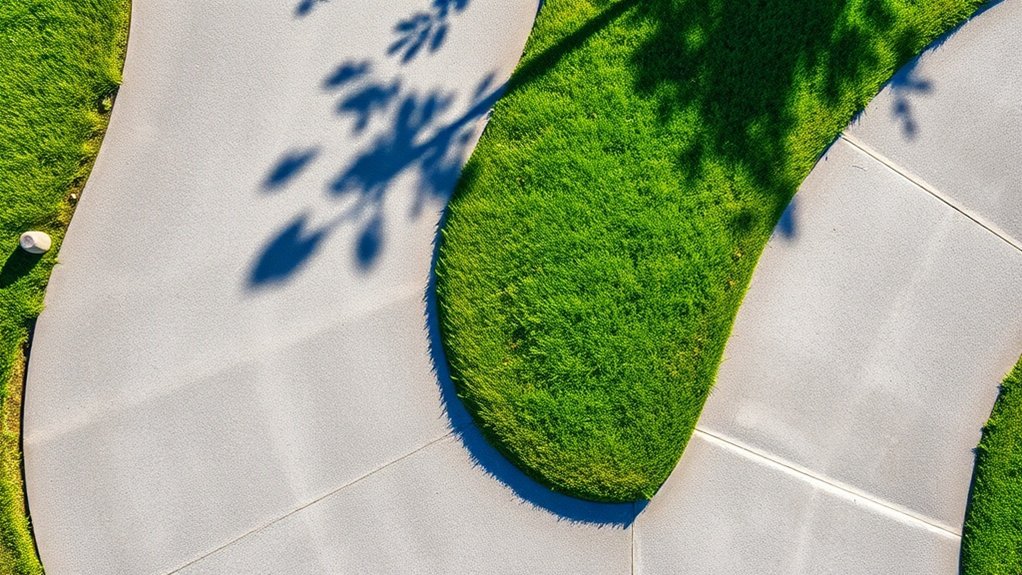
When designing concrete driveways on sloped areas, it’s essential to maintain a minimum slope of 1/4 inch per foot to ensure proper water drainage.
This slope helps direct rainwater away from buildings, reducing the risk of damage. It’s crucial to follow these guidelines to ensure your driveway is both functional and safe.
For instance, if your driveway is 12 feet long, it should drop at least 3 inches over that distance. Keeping these specifications in mind will help you create an effective driveway.
Minimum Slope Recommendation
A minimum slope of 2% is crucial for concrete driveways to ensure proper drainage and usability. This standard helps prevent water pooling and enhances safety.
Here are some key points to consider for slope calculation and drainage design:
- For every 10 feet of horizontal length, aim for a vertical drop of at least 2.5 inches.
- If using stamped concrete, you may need a steeper slope of around 1.5 inches per 10 feet due to its uneven surface.
- Always check local building regulations, as they often require a minimum slope of 2% away from buildings.
Effective Water Management
Effective water management is crucial for the durability and functionality of concrete driveways, particularly in sloped areas. Proper drainage solutions require drainpipes to have a minimum slope of 1/8 inch per foot and an outlet invert level that’s 1/2 inch above the gutter flow line.
To effectively manage runoff, the concrete surface should slope at around 1/4 inch per foot, directing water away from buildings. Furthermore, grading within 10 feet of foundations must slope downwards to prevent water pooling, ideally at a 2% slope.
If natural grading isn’t feasible, consider installing drains or swales to divert water efficiently. By following these guidelines, you can protect your driveway and reduce the risk of structural damage.
Common Challenges and Mitigation Strategies
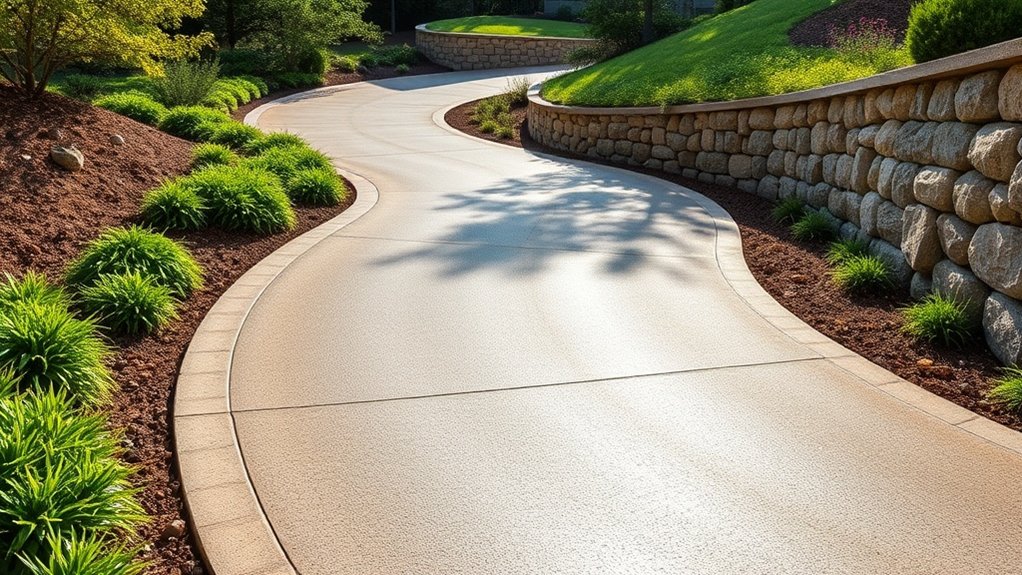
Constructing concrete driveways on sloped areas can be challenging, but there are effective strategies to enhance durability and safety. Here are three essential approaches:
- Soil Stabilisation: Ensure proper soil compaction and consider using crushed stone or stabilising agents like lime to improve the subgrade. This helps prevent shifting and cracking.
- Drainage Solutions: Create drainage channels and ensure proper grading to direct water runoff away from the driveway. This reduces erosion risk and maintains structural integrity.
- Surface Traction: Improve surface texture with grooving or anti-slip coatings. This enhances traction and reduces slip hazards, ensuring safe access for vehicles and pedestrians. Additionally, effective drainage systems like French drains can be incorporated to further enhance water management and prevent erosion.
Material Selection and Cost Considerations
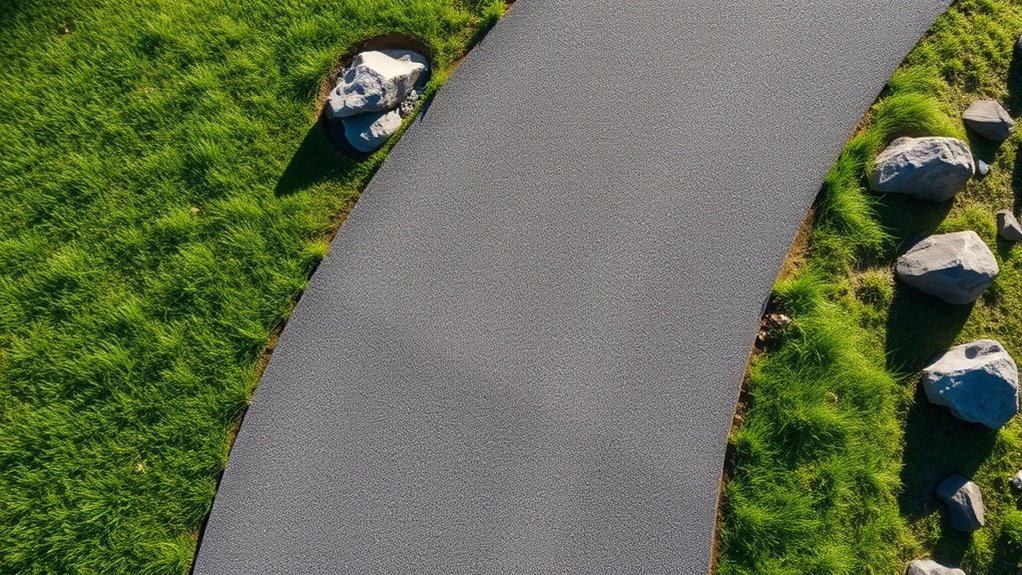
Choosing the right materials for concrete driveways on slopes is crucial for durability, safety, and cost-effectiveness.
Plain concrete is a popular option due to its strength and low maintenance needs. If you’re looking for something more visually appealing, coloured concrete can enhance aesthetics but usually costs 10-30% more.
For better drainage, consider permeable concrete pavers; they’re durable but may require a higher initial investment. While asphalt might seem cheaper at first, its ongoing maintenance can lead to higher overall costs.
It’s wise to conduct a detailed cost comparison to assess your options. Additionally, reinforcing your driveway with steel or wire mesh can improve its durability, ensuring it stands up to the demands of a sloped surface. Proper base preparation is crucial for long-lasting stability, which is essential for handling the weight of heavy vehicles on an incline.
Surface Treatments for Enhanced Safety
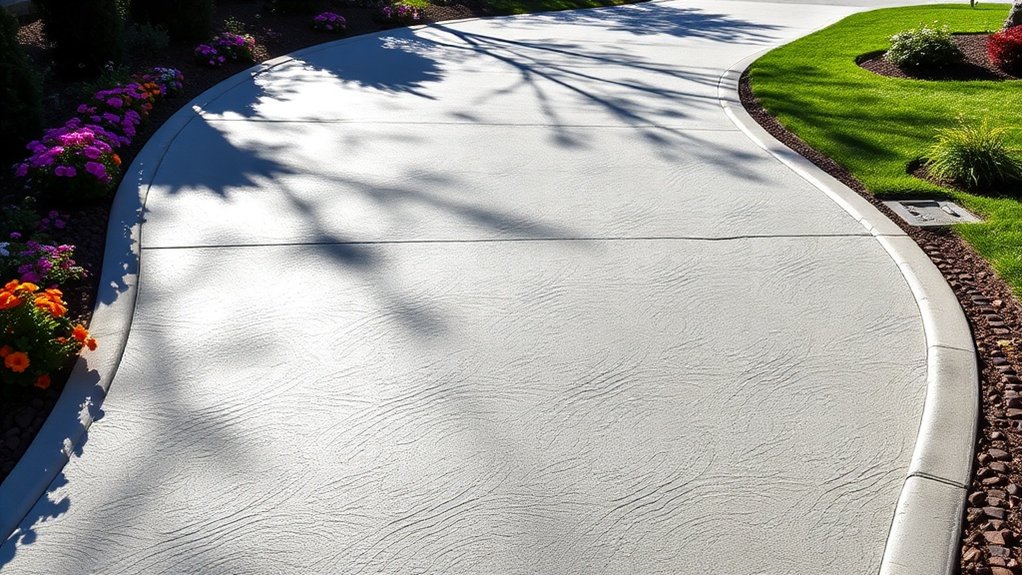
When considering surface treatments for sloped concrete driveways, focus on anti-slip coatings, textured surfaces, and effective drainage solutions.
These options significantly enhance traction and safety, particularly in wet or icy weather.
Assessing how these treatments fit with your driveway’s design will ensure both practicality and durability.
Anti-Slip Coatings
Anti-slip coatings are essential for improving safety on concrete driveways, especially in sloped areas where slips are more likely.
To achieve optimal slip resistance, consider the following key factors:
- Choose the Right Additives: Incorporate anti-slip additives such as aluminium oxide or polymer beads to improve grip and ensure the longevity of the coating.
- Select the Appropriate Coating: Prefer durable epoxy or polyurethane coatings that can endure the British weather while providing a slip-resistant surface.
- Ensure Proper Application: It’s crucial to distribute additives evenly during application for consistent performance. Additionally, regular maintenance of the surface is vital to maintain skid resistance and prevent slipping hazards over time.
Textured Surface Options
To improve safety on sloped concrete driveways, using textured surface options is crucial.
Textured sand coatings are durable and provide better traction, especially in icy conditions. Stamped concrete textures not only look attractive but also offer skid resistance, making them both stylish and safe.
Exposed aggregate surfaces create a rough texture that performs well in wet weather, enhancing traction while boosting curb appeal.
Brushed concrete finishes feature fine grooves that help channel water, further reducing the risk of slipping on slopes.
Moreover, adding grit to sealers helps maintain traction on sealed surfaces, counteracting the dangers of smooth finishes.
These textured options not only enhance safety but also improve the appearance of your driveway, ensuring it’s both practical and visually appealing.
Drainage Enhancement Techniques
To ensure safety on sloped concrete driveways, it’s crucial to implement effective drainage enhancement techniques. Here are some straightforward solutions to achieve proper water diversion and prevent issues:
1. Proper Slope Design: Maintain a minimum slope of 1/4 inch per foot to direct water away from buildings, preventing pooling and potential damage.
2. Surface Drainage Systems: Consider installing trench drains or channel drains to efficiently capture runoff.
Using permeable materials can also facilitate water infiltration.
3. Subsurface Drainage: French drains can be an excellent choice for redirecting infiltrated water beneath the driveway, helping to reduce hydrostatic pressure and minimise potential concrete damage.
Maintenance Strategies for Longevity
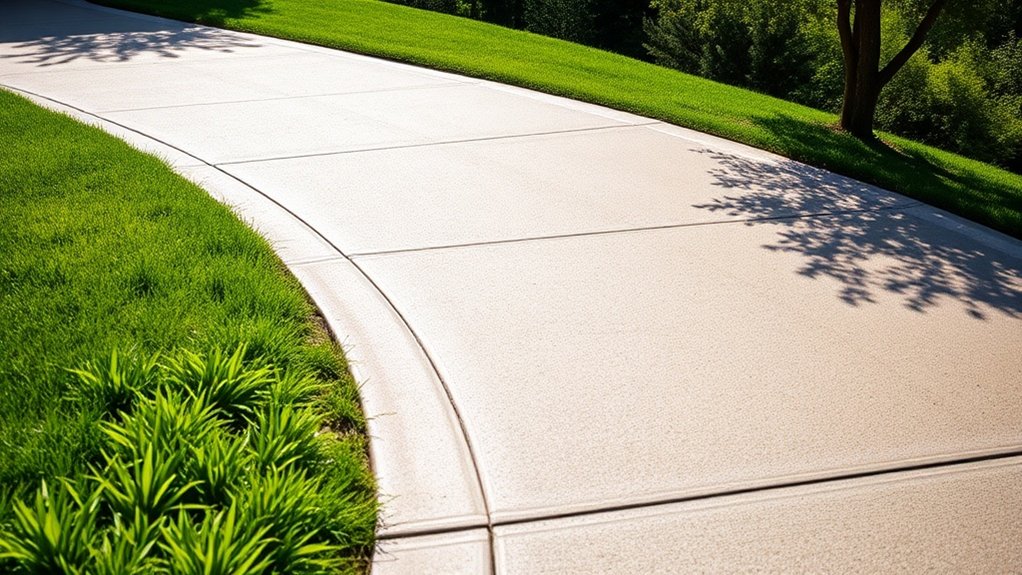
Maintaining concrete driveways in sloped areas is crucial for ensuring their durability and structural soundness. Regular crack maintenance and effective drainage management are key to preventing soil erosion and damage.
| Maintenance Task | Frequency | Purpose |
|---|---|---|
| Inspect for cracks | Twice a year | Spot and repair small cracks early |
| Apply sealants | Every 2 to 5 years | Decrease water absorption |
| Clear drainage systems | Seasonally | Stop water pooling |
| Monitor soil stability | Annually | Check compaction and prevent erosion |
Environmental Considerations in Driveway Design
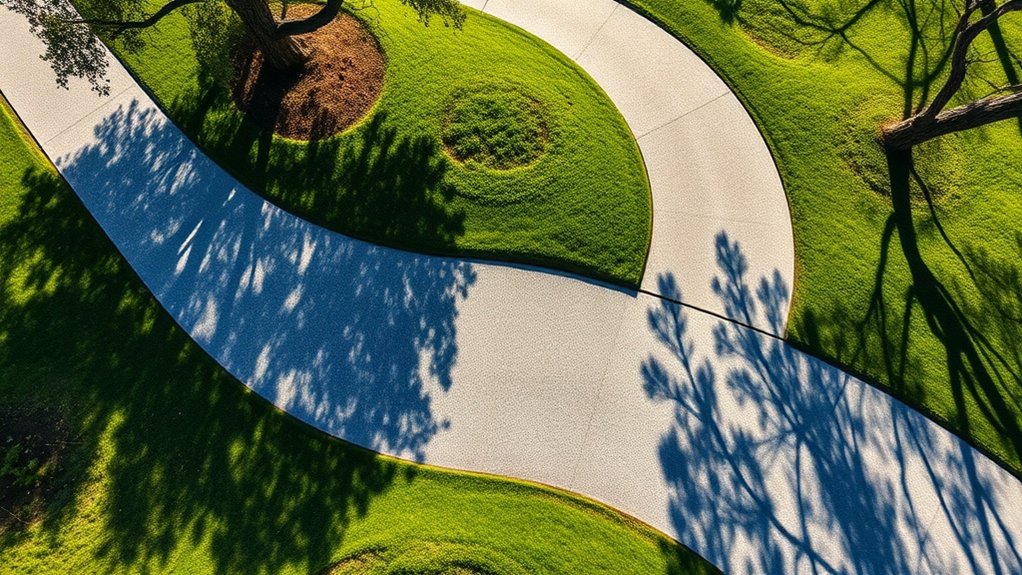
When designing driveways, it’s crucial to consider environmental factors to create sustainable and practical spaces. By adopting eco-friendly practices, you can significantly lessen the environmental impact of your projects.
Here are three key areas to focus on:
- Permeability: Use permeable materials, such as porous concrete, to manage stormwater effectively. This allows water to soak in, reducing the risk of flooding and protecting local wildlife.
- Sustainable Materials: Choose aggregates or green concrete that incorporate recycled materials. This approach boosts durability while minimising the extraction of new resources.
- Heat Management: Selecting lighter-coloured or textured surfaces can help lower heat absorption, which is essential in tackling the urban heat island effect.
Frequently Asked Questions
How Long Does a Concrete Driveway Typically Last on Slopes?
A concrete driveway on slopes generally lasts between 25 to 50 years if properly maintained and if effective drainage is in place. Regular inspections and prompt repairs can significantly extend its lifespan and help prevent early deterioration. For example, keeping an eye out for cracks and addressing them quickly can save you from larger issues down the line.
What Is the Best Season for Pouring Concrete on Slopes?
Spring is the ideal time for pouring concrete on slopes in the UK. The mild and stable weather during this season ensures proper curing of the concrete, reducing the risk of issues like freezing temperatures or rapid evaporation that can compromise its strength.
Can I Use Recycled Concrete for Sloped Driveways?
Yes, you can use recycled concrete for sloped driveways. To ensure stability, it’s essential to compact the material thoroughly and include adequate drainage solutions. Without proper stabilisation, loose material can erode and shift on slopes. For example, if you’re laying a driveway on a hill, make sure the concrete is well-packed and water can drain away effectively to prevent issues.
Are There Any Eco-Friendly Options for Sloped Driveways?
Yes, there are eco-friendly options for sloped driveways. Consider permeable paving, which allows water to drain through, reducing runoff. You could also use green landscaping methods that incorporate natural materials. These choices improve stability while lessening environmental impact and supporting sustainable water management.
How Can I Enhance the Aesthetic Appeal of a Sloped Driveway?
To improve the aesthetic appeal of your sloped driveway, think about adding landscaping features like planting beds with gentle curves along the sides. Using decorative finishes such as coloured concrete or exposed aggregate can also enhance both safety and visual charm.
Conclusion
In summary, when dealing with concrete driveways on sloped areas, you’re not just creating a surface; you’re ensuring a safe and durable route that can withstand the elements. Pay attention to permitting, drainage, and ongoing maintenance to ensure a robust installation that lasts. Think of a well-designed driveway as a reliable bridge over a rough patch, allowing vehicles to navigate smoothly and adding value to your property. Stay proactive, and your investment will yield benefits for years to come.
Achieve a durable and slip-resistant tarmac driveway on slopes with expert installation tips and essential drainage solutions that will enhance Read more
Keeping safety and aesthetics in mind, discover which driveway material excels on slopes—your ideal choice might surprise you!
Wondering how to successfully lay a driveway on a sloped surface? Discover essential tips and techniques to ensure durability and Read more

